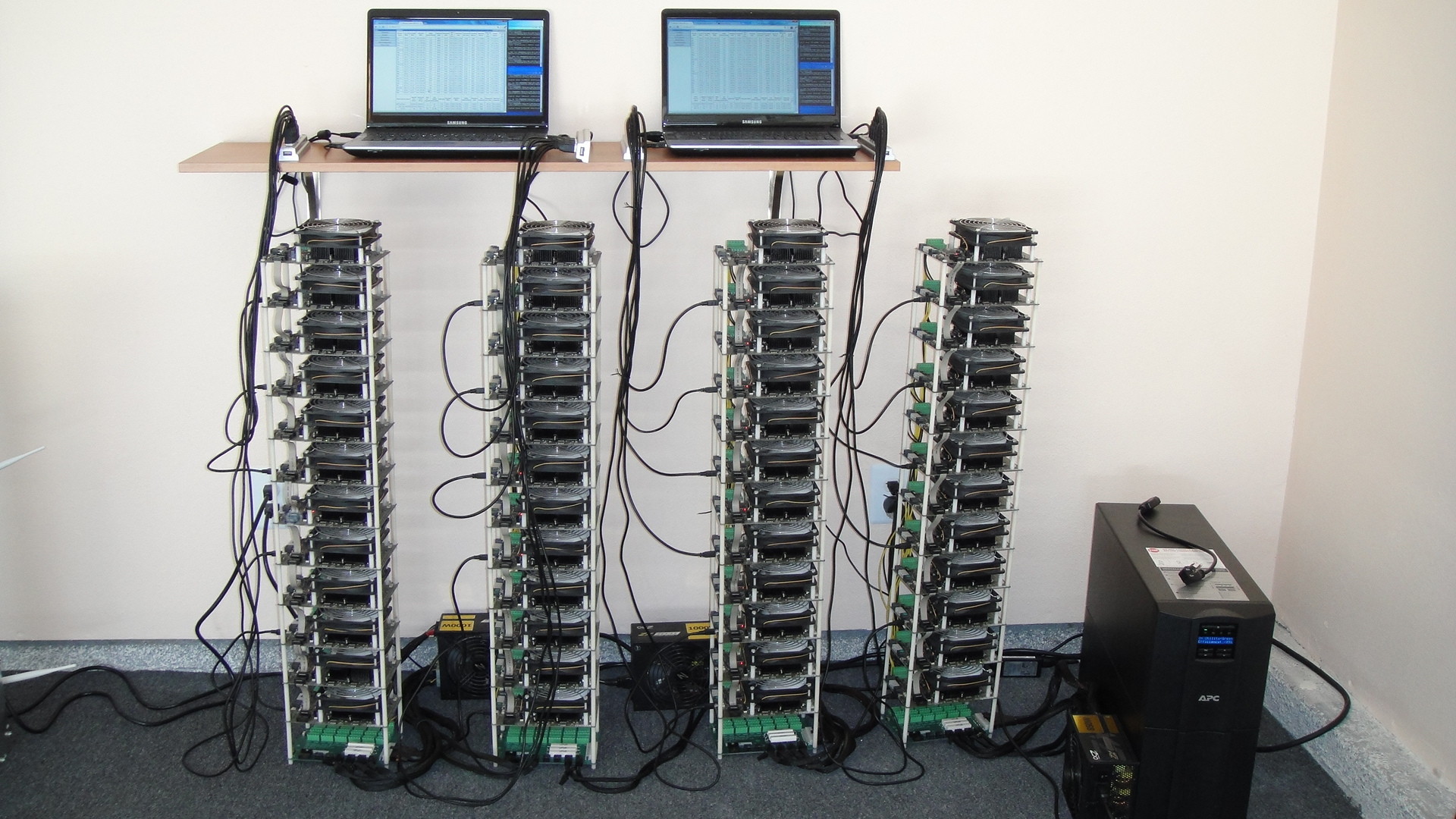Bitcoin Mining
 If you've ever wondered where Bitcoin comes from and how it goes into circulation, the answer is that it gets "mined" into existence. Bitcoin mining serves to both add transactions to the block chain and to release new Bitcoin. The mining process involves compiling recent transactions into blocks and trying to solve a computationally difficult puzzle. The first participant who solves the puzzle gets to place the next block on the block chain and claim the rewards. The rewards incentivize mining and include both the transaction fees (paid to the miner in the form of Bitcoin) as well as the newly released Bitcoin.
If you've ever wondered where Bitcoin comes from and how it goes into circulation, the answer is that it gets "mined" into existence. Bitcoin mining serves to both add transactions to the block chain and to release new Bitcoin. The mining process involves compiling recent transactions into blocks and trying to solve a computationally difficult puzzle. The first participant who solves the puzzle gets to place the next block on the block chain and claim the rewards. The rewards incentivize mining and include both the transaction fees (paid to the miner in the form of Bitcoin) as well as the newly released Bitcoin.
Transaction Fees
As the block reward diminishes over time, eventually approaching zero, the miners will be less incentivized to mine bitcoin for the block reward. This could be a major security problem for Bitcoin, unless the incentives provided by the block reward are replaced by transaction fees.
Transaction fees are some amount of Bitcoin that are included in a transaction as a reward for the miner who mines the block in which the transaction is included. Transaction fees are voluntary on the part of the person sending a transaction. Whether or not a transaction is included in a block by a miner is also voluntary. Thus, users sending transactions can use transaction fees to incentive miners to verify their transactions. The version of the Bitcoin client released by the core development team, which can be used to send transactions, has fee minimum rules by default.
Mining Difficulty
How hard is it to mine Bitcoins? Well, that depends on how much effort is being put into mining across the network. Following the protocol laid out in the software, the Bitcoin network automatically adjusts the difficulty of the mining every 2016 blocks, or roughly every two weeks. It adjusts itself with the aim of keeping the rate of block discovery constant. Thus if more computational power is employed in mining, then the difficulty will adjust upwards to make mining harder. And if computational power is taken off of the network, the opposite happens. The difficulty adjusts downward to make mining easier.
The higher the difficulty level, the less profitable mining is for miners. Thus, the more people mining, the less profitable mining is for each participant. The total payout depends on the price of Bitcoin, the block reward, and the size of the transaction fees, but the more people mining, the smaller the slice of that pie each person gets.
Mining Hardware
Anyone with access to the internet and suitable hardware can participate in mining. In the earliest days of Bitcoin, mining was done with CPUs from normal desktop computers. Graphics cards, or graphics processing units (GPUs), are more effective at mining than CPUs and as Bitcoin gained popularity, GPUs became dominant. Eventually, hardware known as an ASIC (which stands for Application-Specific Integrated Circuit) was designed specifically for mining Bitcoin. The first ones were released in 2013 and have been improved upon since, with more efficient designs coming to market. Today, mining is so competitive, it can only be done profitably with the latest ASICs. When using CPUs, GPUs, or even the older ASICs, the cost of energy consumption is greater than the revenue generated.
Electricity Costs
The main operational costs for miners are the hardware and the electricity cost, both for running the miners but also for providing adequate cooling and ventilation. Some major mining operations have been purposely located near cheap electricity. The largest mining operation in North America, run by MegaBigPower, is located on by the Columbia River in Washington State, where hydroelectric power is plentiful and electricity prices are the lowest in the nation. And CloudHashing runs a large mining operation in Iceland, where electricity generated from hydroelectric and geothermal power sources is also renewable and cheap, and where the cold northern climate helps provide cooling.
Regulation
Earlier this year, the IRS issued tax guidance regarding Bitcoin and said that income from mining could constitute self-employment income and be subjected to tax. FinCEN, the Financial Crimes Enforcement Network, is a bureau of the U.S. Treasury that collects and analyzes data on financial transactions with the aim of fighting financial crimes, especially money laundering and terrorist financing. FinCEN has issued guidance saying that bitcoin miners are not considered Money Transmitters under the Bank Secrecy Act and recently clarified that providers of cloud mining services are also not considered Money Transmitters.
How much you invest in the miners ?
0.1 BTC free for mining-you can buy 9 th/s lifetime , offer limited time https://seebit.io/?r=56086
How much is the cost for the mining machine?
0.1 BTC free for mining-you can buy 9 th/s lifetime , offer limited time https://seebit.io/?r=56086
Congratulations @pawank! You have received a personal award!
Click on the badge to view your Board of Honor.
Do not miss the last post from @steemitboard:
SteemitBoard World Cup Contest - The results, the winners and the prizes
Congratulations @pawank! You received a personal award!
You can view your badges on your Steem Board and compare to others on the Steem Ranking
Vote for @Steemitboard as a witness to get one more award and increased upvotes!